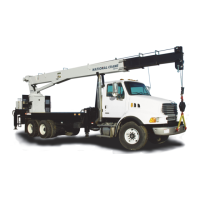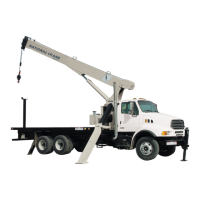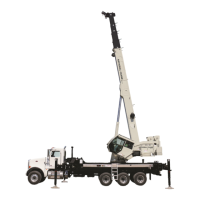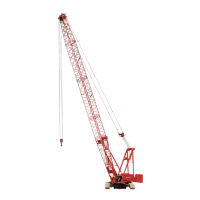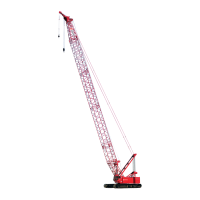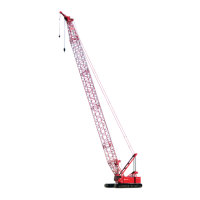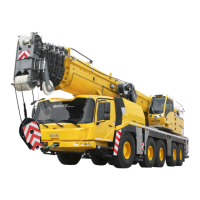National Crane Published 10-30-2014 Control # 040-09 7-29
1400H OPERATOR AND SERVICE MANUAL INSTALLATION
INITIAL CRANE RUN IN PROCEDURE
1. With the unit in an open area for testing that will permit
full operation of all its functions, engage the PTO and run
the truck engine at idle to activate the pump
(approximately 600 rpm). Turn the crane power switch
on and operate the crane and outriggers though all of
their functions at least six (6) times to purge cylinders of
air. Operate the control valves slowly with the truck
engine at idle and cycle each cylinder through its
complete stroke each time. Check to see that movement
of outriggers and boom correspond with direction
indicated on switches and levers. Refer to hydraulic or
electrical schematic and parts pages to correct any
problems.
Note: Add oil to reservoir as required to keep air
from reentering the system.
2. Set throttle according to engine rpm and PTO ratio to get
2000 rpm pump shaft speed.
3. When all cylinders have operated through complete
cycles, stow crane and place the outriggers in the up
position. The oil level should be visible near the top of
the sight gage.
4. Lift and stability test must now be performed on the unit.
(See “Stability Test” page.) Hoist and crane tests should
be conducted to insure proper performance.
5. After testing is completed, the mounting bolts and all
cable clamp bolts should be re-torqued to specifications.
6. Upon completion, overall height of crane vehicle
combination must be measured and posted inside of cab
informing driver of overall height.
BOOM RESTS
Before the mounting of a crane is complete, a boom rest
must be installed. A rest must be supplied for transport to
reduce vibratory stress on the crane and truck and protect
rotation system from transient damage.
The load line shall be hooked to some point on the bed,
truck frame, etc. to secure the hook weight during transport.
Install tie down point low enough to allow room for anti-two-
block weight. Do not shorten chain.
The boom rest should be positioned to support the 1st
section boom. Be careful to avoid contacting the boom at or
near the end where the retract cables are located. Contact
with these cables will result in costly repairs.
The boom rest saddle provided is designed to support
the 1 st section boom. It will be necessary to modify the
saddle to make it narrower and reposition the support
cushions under the boom side plates if the boom is extended
to reach the boom rest.
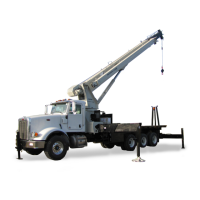
